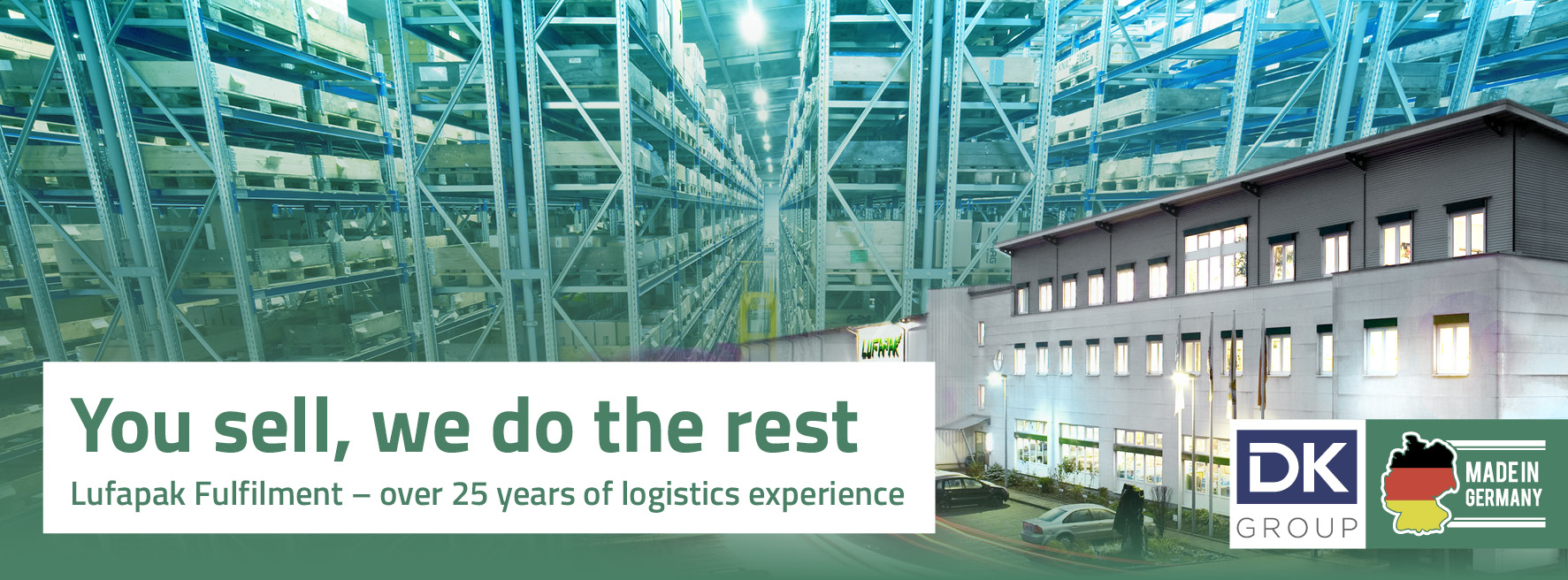sales@lufapak.de +49 2631/384-0 Contactform
Logistics planning definition
Most of the logistics planning is arranged before production. Strategic logistics planning is assigned to long-term planning, while operational logistics planning is assigned to short- and medium-term planning. After production starts, there is also a specific schedule. Logistics planning is a decisive factor in determining the cost of the final manufactured product. It ensures the necessary efficiency of the processes along the logistics value chain and is thus also responsible for ensuring competitiveness. In addition, logistics planning is forward-looking planning and control of all transport and storage processes of a company’s logistics. It should ensure that materials are available in a coordinated manner according to type (picking) and quantity (batches) as well as space (location) and time (lead time).
With professional logistics planning, companies multiply their added value. This is especially important in case of reorganization or restructuring. The coordination of material flows, the optimization of logistics processes and the targeted selection of logistics systems and warehouse technology are decisive factors in improving a company’s logistics performance. Only if the company’s logistics processes function smoothly and efficiently can an increase in performance be achieved in other areas of the company, such as production and distribution. In addition, professional logistics planning guarantees a manufacturer-independent view of the most economical and effective solutions for your internal logistics tasks. The goal of logistics planning is an exact calculation that takes into account all possible parameters of the warehouse. The result of professional consulting and effective logistics planning is a highly efficient process that includes material flow, productivity and just-in-time management in all areas.
Strategic logistics planning and operational logistics planning
The planning period can be short, medium or long term. Strategic logistics planning can be assigned to long-term planning periods. This involves internally and externally influenced planning, such as site planning, decisions on investments in production facilities and control systems. The overall picture is important. Operational logistics planning can be assigned to short- or medium-term planning areas. It is mainly concerned with planning the internal capacity of people and means of transport and planning their deployment and production figures. It is important to determine the potential for success, which shows the chances of success in the future.
Success potential is the potential to differentiate a company from others and give them a competitive advantage. The established requirements meet or exceed the requirements of the market in the long term. In addition, the calculation of optimal batch and order quantities helps to optimize purchasing processes and minimize storage costs. The target triangle of cost, time and quality can also be applied to logistics planning targets. In addition, the quantity, location and the object itself can be added: The goal is to get the right quantity of the right object at the right time, at the right place, in the right quality and at the right cost.
Logistics planning tasks – warehouse planning
Warehouse planning represents an area of logistics planning which is divided into warehouse organization, warehouse and transport technology, warehouse units and warehouse layout. Warehouse organization includes the storage and retrieval of materials, the flow of materials and the control of these processes as well as the selection of warehouse strategies. In the area of shipping, for example, it is about the entire transport process, i.e. means of transport, transport handling and transport control. In warehousing and transportation, it is about the type of warehouse operation, i.e., which means of transport should be available and whether they should run continuously or discontinuously. The type of racking is also determined. In the case of storage units, for example, the shape, size and weight of the stored goods determine whether storage aids such as pallets or mesh pallets are required for storage. Layout planning is divided into rough planning and detailed planning with the goal of an efficient material flow, which can be achieved through layout optimization, material flow analysis and space utilization considerations.

Logistics planning – methods and costs
Planning begins with the documentation of goals and requirements. First, the actual state and all dependencies of individual components of existing warehouse processes and objects are documented. Within the scope of the basic determination, the available data is processed and analyzed. This can be done, for example, using logistics planning methods such as inventory analyses in the area of order picking to determine the necessary warehouse scope and service level. In the next step of logistics planning, the conceptual planning, warehouse organization is developed. Supply and delivery concepts, ordering strategies, and storage and shipping techniques are compared and selected. In addition to the investment costs incurred during warehouse conversion or new construction, future operating costs are also considered in this phase. Layout planning is divided into rough planning and detailed planning with the goal of an efficient material flow, which can be achieved through layout optimization, material flow analysis and space utilization considerations.
The main task of logistics planning is to prepare and ensure the current and future competitiveness of a company’s corporate logistics. Logistics planning also aims to develop the logistics strategy required to implement the overall corporate or business strategy. According to the general planning hierarchy, the individual planning activities in logistics planning are related to and above each other. High planning demands in logistics require mathematical planning calculations to cope with logistical problems.
Contact us now and get advice


